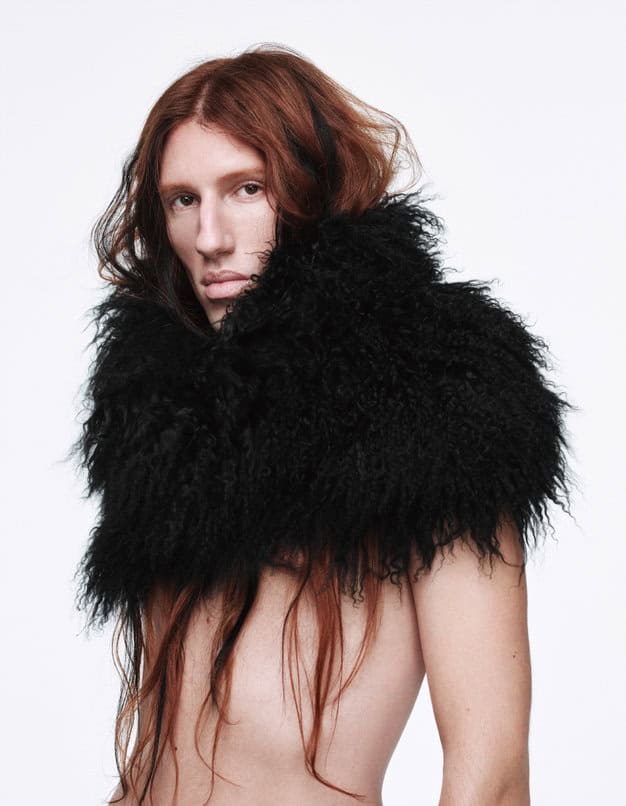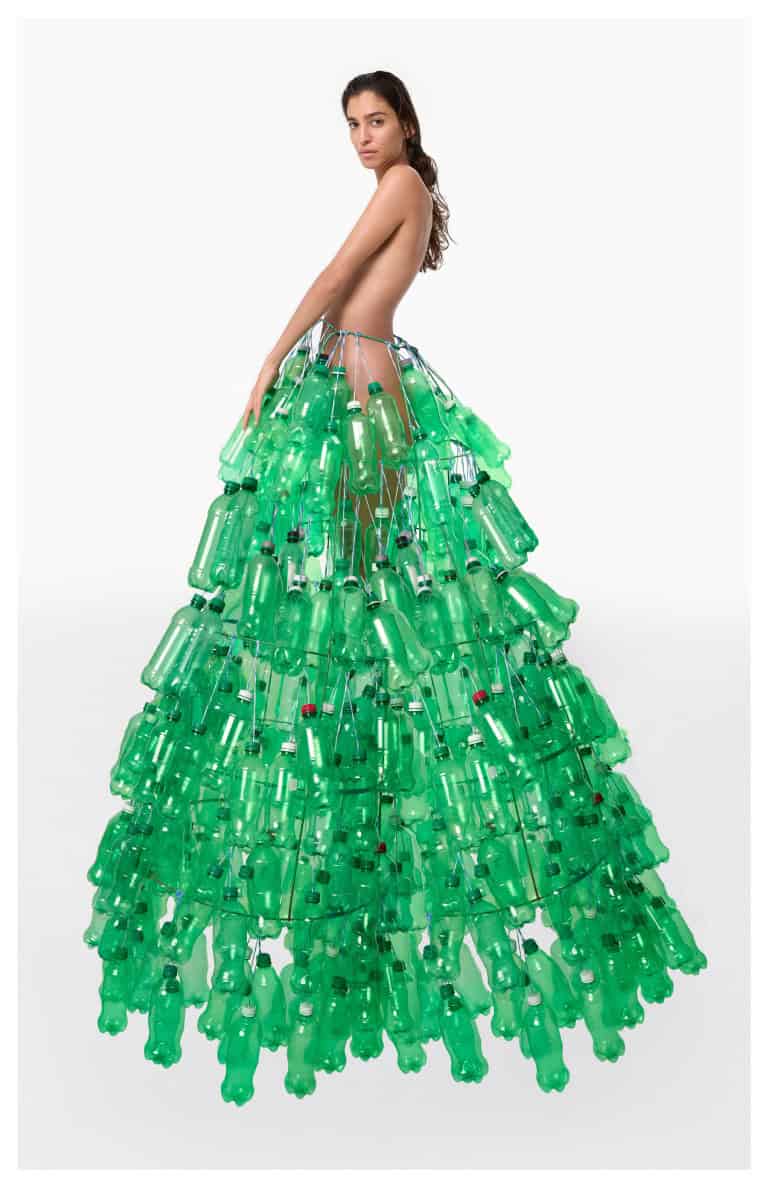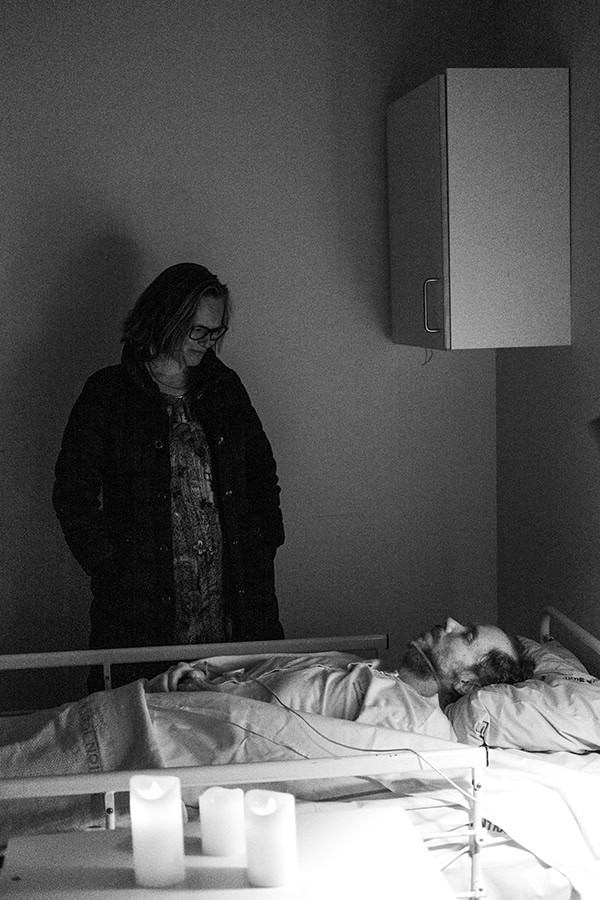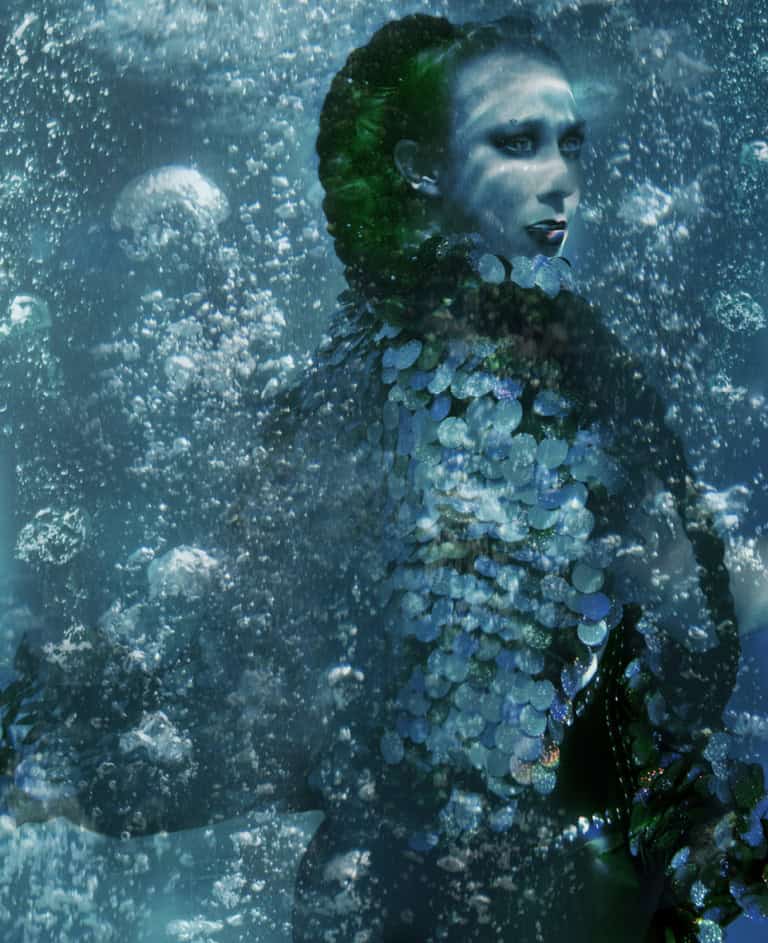
de Saint Sernin at Ann Demeulemeester
The appointment of Ludovic de Saint Sernin as the new Creative Director of Ann Demeulemeester fills a vacancy which has been empty since 2020. Demeulemeester retired and stopped designing almost ten years ago, however she has remained involved in her namesake brand. In 2020, Claudio Anonioli purchased Ann Demeulemeester and the creative director at that time was Sébastien Meunier who stepped at the time of acquisition. December’s announcement about the appointment of the Belgium born and Paris based de Saint Sernin, is a significant generational shift contributing to the reimagining of heritage brands eagerly igniting wider markets and new vocabularies of inclusive sensibility.
De Saint Sernin collections emphasize sexuality and freedom of expression, notably modern model casting of all genders and races. His clothing has always been fluid, with an unapologetic sexual expression and identity. It is key to note that the past five years since the founding of his brand the designer established himself as someone to watch with a growing celebrity fan base.
The press release and the social media announcements stated “Authorship and autobiography gain centrality, as Ludovic de Saint Sernin shapes the Ann Demeulemeester traits around his vision, proclivities and individuality, offering a first-person reading and the connection with today’s audience that comes from that….. sensuality, tension, silhouette, fluidity, wildness and a graphic feel are defining pillars of the language Ludovic de Saint Sernin is about to build as he traces the new course of Ann Demeulemeester, injecting his approach to fashion as a tool to shape and free one’s presence and appearance.”


Ann Demeulemeester was one of two women who were part of the leading fashion histories of the late nineteen eighties know as the Antwerp Six. The Belgium collective were all graduates of Royal Academy of Fine Arts in Antwerp the other members were Dries Van Noten, Dirk Van Saene, Walter Van Beirendonck, Dirk Bikkembergs and Marina Yee. The name Antwerp Six was coined because the press struggled with pronunciation of their names. The collective changed international fashion bringing a radically distinct aesthetic when they stormed London Fashion Week in 1986. After London, the group travelled the world together, showing as a collective in other emerging fashion markets fashion beyond the Belgian border. Their respective careers outgrew collective structure and showing on many practical levels. The work has been described as ‘poetic’ it’s classified as clothing and design which aspires beyond functionality, concerning itself with conceptual craft, textile possibilities and visually discernible beauty. As of late the work of Martin Margiela has beeen included in the group as an honorary member.
Fundamentally, Demeulemeester’s aesthetic was a revolt against the formality of Antwerp and one of Academy’s founders who was also her instructor. Her design language is a complex contrast including but not limited to emotion. Tension often seen in her designs revealing many layers. “Serious but never severe, meticulous but experimental, strong but always sensual.”
Demeulemeester also made her mark in tailoring, highlighting a western fashion designer’s perspective of experimentation in asymmetric cut, void and fabrication.. Her famous deconstructed style stemmed from the Japanese avant-garde designers making strong inroads in Paris fashion during the nineteen eighties. Demeulemeester’s dark sheer fabrications during the nineties not only highlighted the rising deconstruction genre and advancements knitted materials but retrospectively shed an awareness on Europe’s recasting of runway models at end of the twentieth century. The look aligns associated with post Perestroika and the opening of new markets. Not unlike many in her fashion generation Demeulemeester’s fashion image reflected the serge of Belgium, Central European and Russian models with scowling brows, a long, lean body, one race and a singular expression of individuality.
To further promote the appointment of Ludovic de Saint Sernin and the highly anticipated Paris Fall 2023 debut collection in March, the brand published a series of portraits of the new Creative Director dressed in archival pieces form the nineteen nineties. They were beautifully photographed by the highly celebrated Willy Vanderperre styled by Olivier Rizzo.



Patrick Michael Hughes Senior Fashion Editor, Men’s Fashion Writer
Photographs by Willy Vanderperre Styled by Olivier Rizzo
Share this post
Patrick Michael Hughes is a fashion and decorative arts historian. He writes about fashion culture past and present making connections to New York, London and Copenhagen's fashion weeks with an eye toward men's fashion. He joined IRK Magazine as a fashion men's editor during winter of 2017.
He is often cited as a historical source for numerous pieces appearing in the Wall Street Journal, The New York Times, CNN, LVMH, Conde Nast, Highsnobiety and others. His fashion career includes years as a fashion reporter/producer of branded content for the New York local news in the hyper digital sector. Patrick's love of travel and terrain enabled him to becoming an experienced cross-country equestrian intensively riding in a number of locations in South America Scandinavia,The United Kingdom and Germany. However, he is not currently riding, but rather speaking internationally to designers, product development teams, marketing teams and ascending designers in the US, Europe and China.
Following his BA in the History of Art from Manhattanville College in Purchase, New York he later completed graduate studios in exhibition design in New York. it was with the nudge and a conversation in regard to a design assignment interviewing Richard Martin curator of the Costume Institute at the Metropolitan Museum of Art he was encouraged to consider shifting his focus to the decorative arts with a concentration in fashion history and curation.
Patrick completed graduate studies 17th and 18th century French Royal interiors and decoration and 18th century French fashion culture at Musée Les Arts Decoratifs-Musée de Louvre in Paris. Upon his return to New York along with other classes and independent studies in American fashion he earned his MA in the History of Decorative Arts and Design from the Parsons/Cooper Hewitt Design Museum program in New York. His final specialist focus was in 19th century English fashion and interiors with distinction in 20th century American fashion history and design.
Currently, he is an Associate Teaching Professor at Parsons School of Design leading fashion history lecture-studios within the School of Art and Design History and Theory,
Read Next




